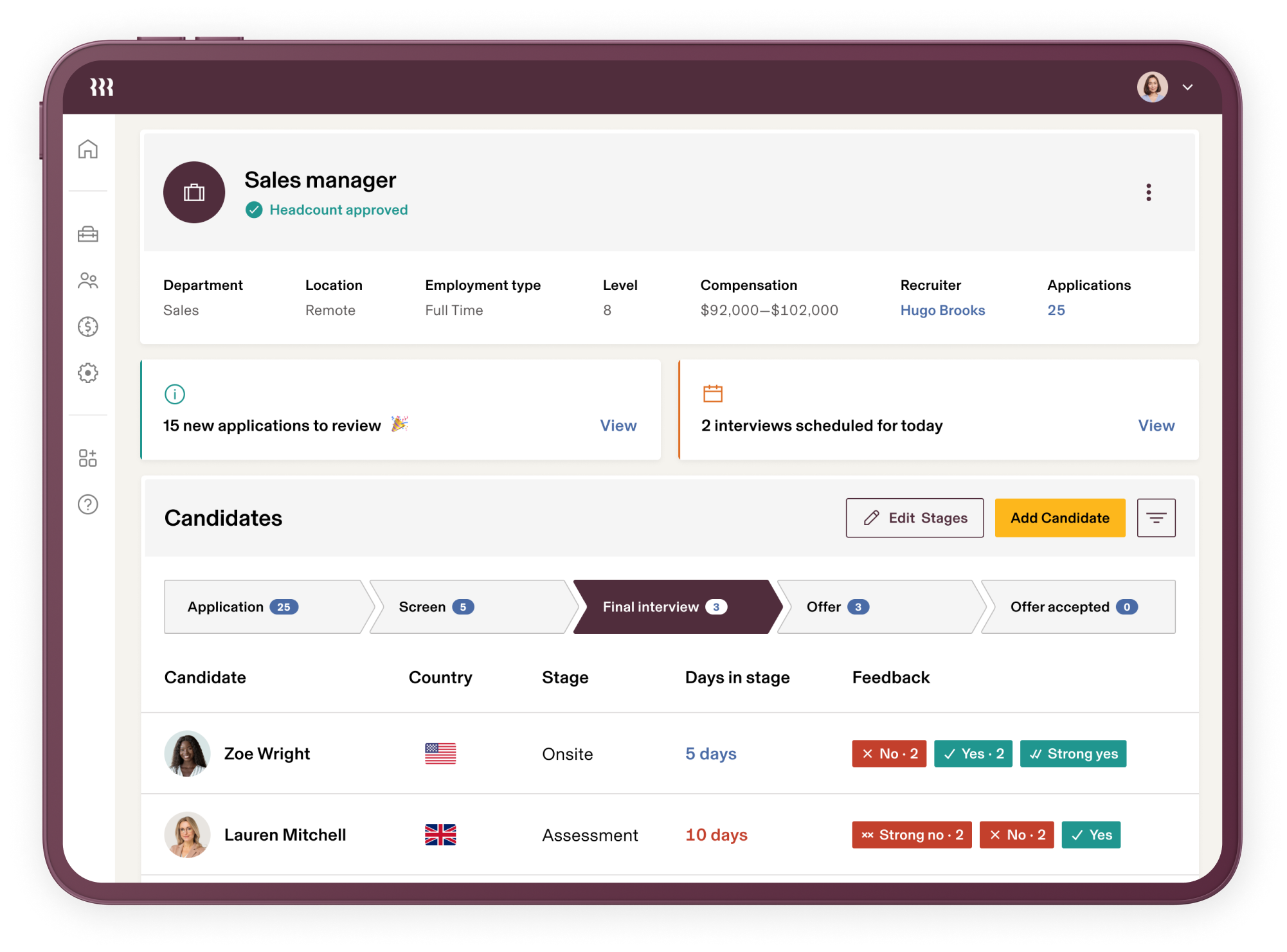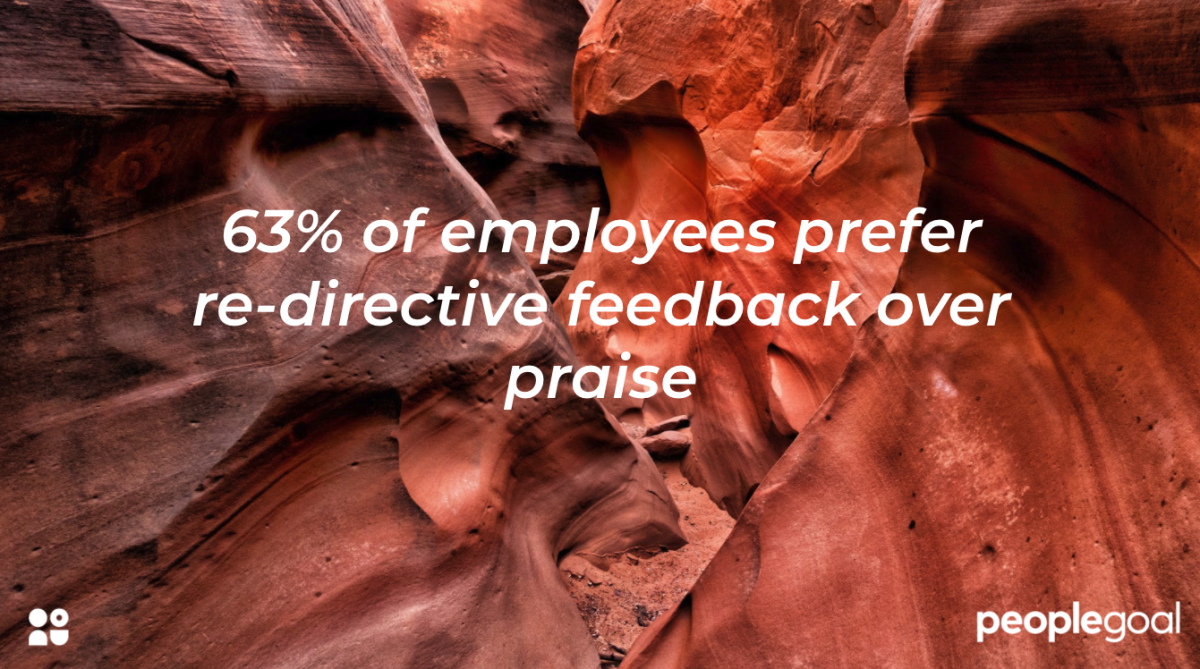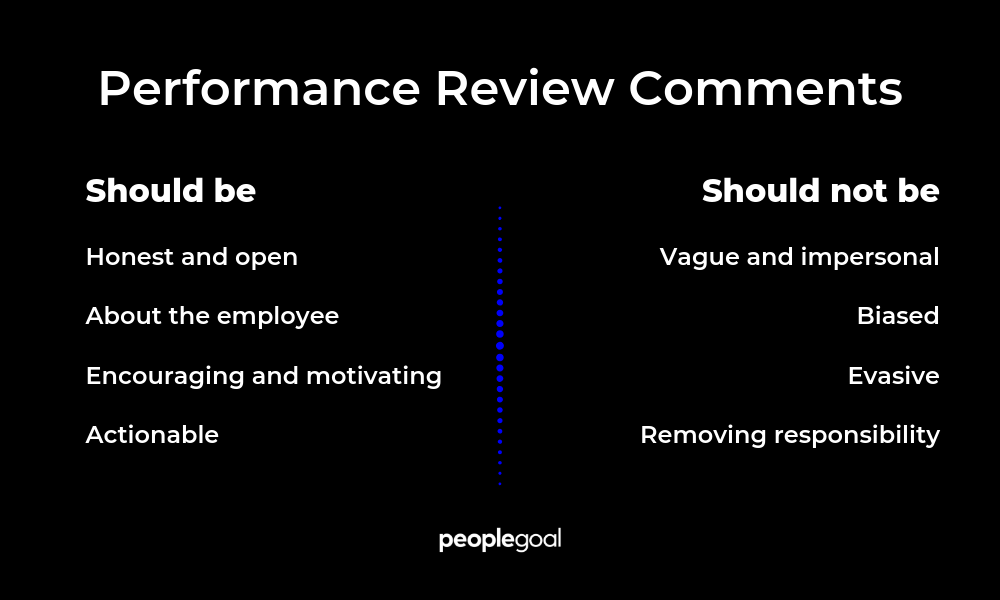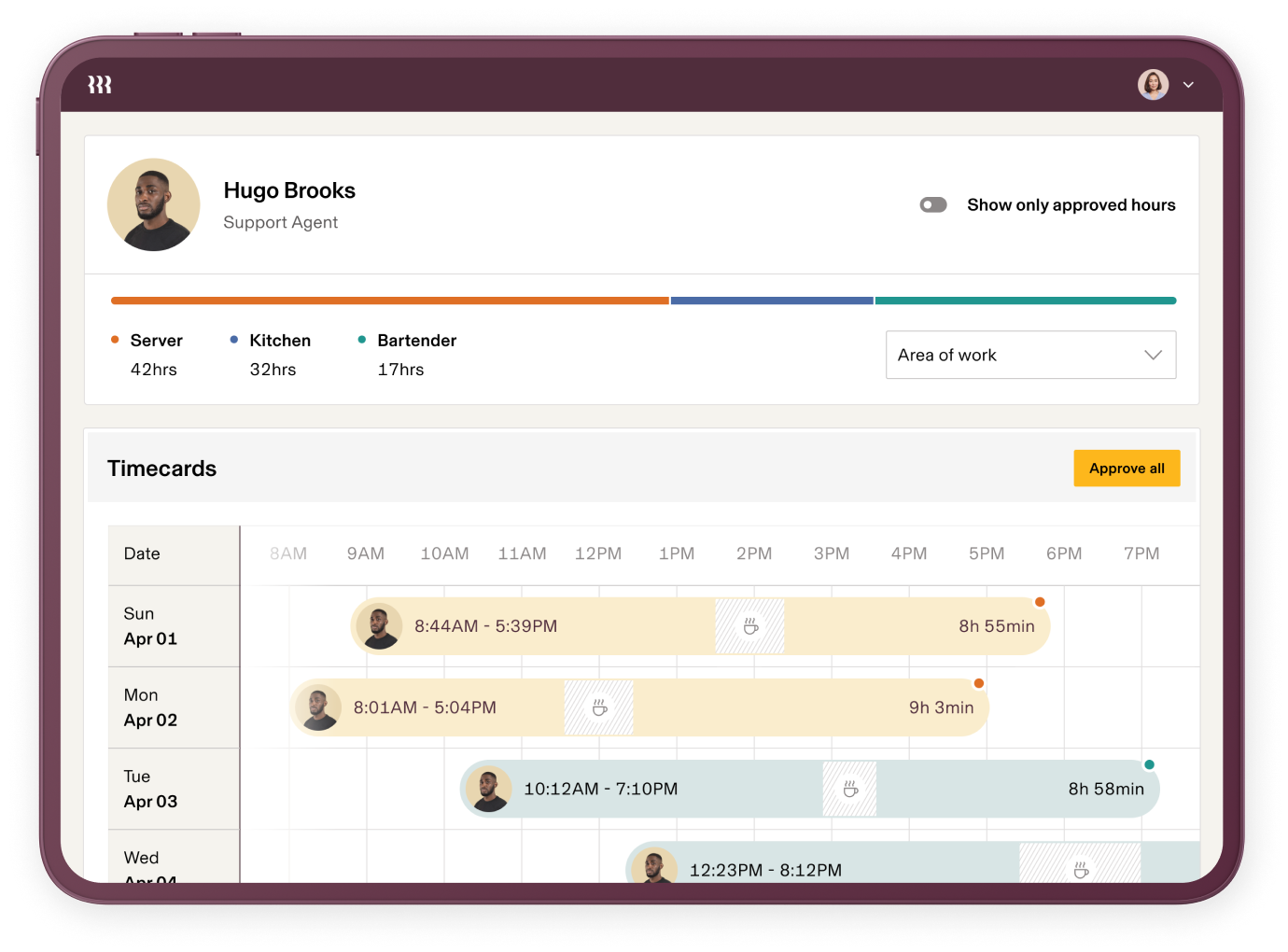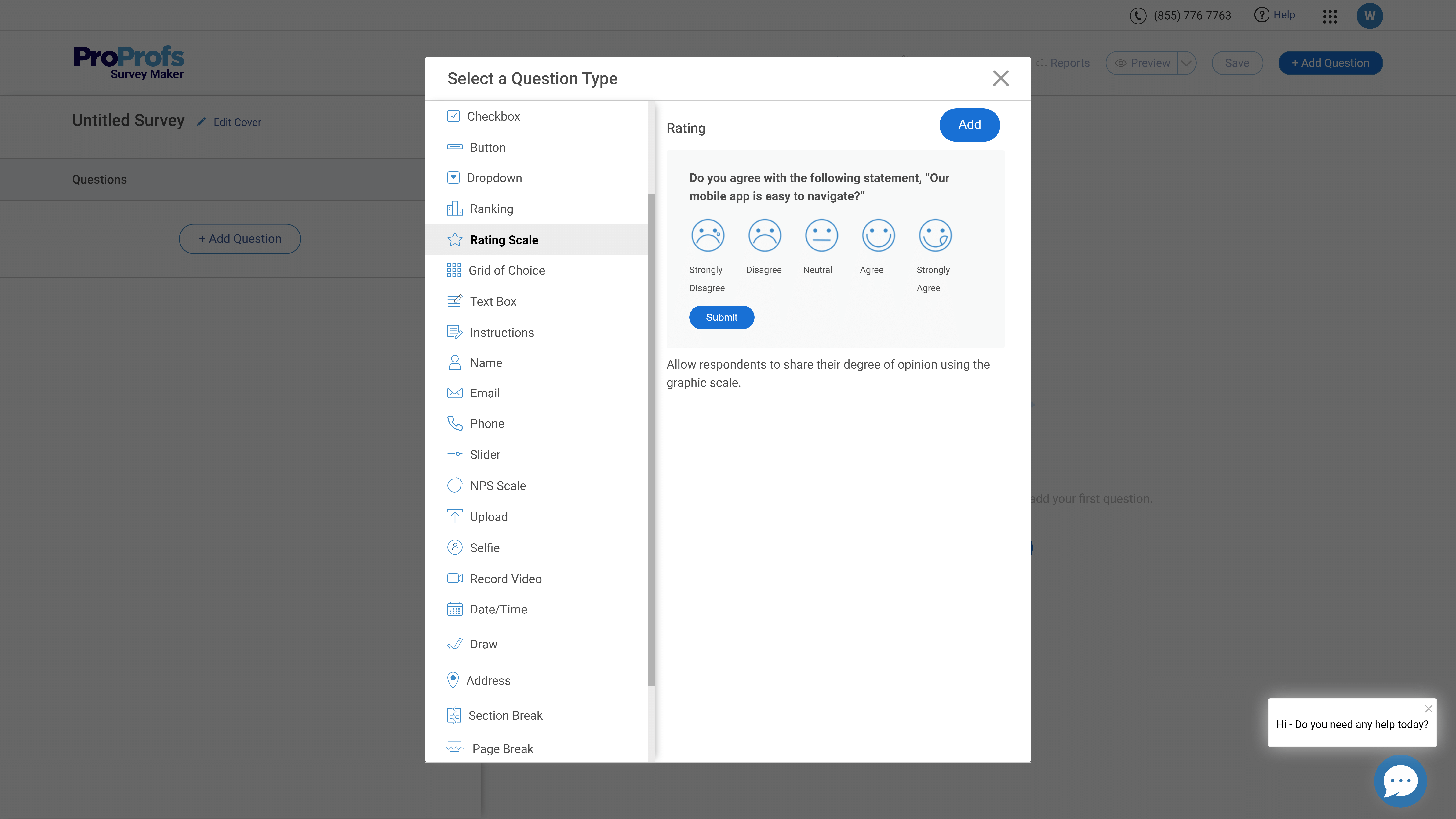In any organization, employees form the foundation blocks, and so much more, for the realization of its interests. As a result, employee engagement surveys must be used to understand how the organization is perceived by its employees and how much they are engaged by their work. Implementing an engagement survey that brings employees into the discussion, whilst also gathering informative data, will enable any organization to monitor variations in motivation and increase productivity.
What is Employee Engagement?
Employee Engagement is recognized as a fundamental business management concept. Essentially, an ‘engaged employee’ is one who is fully involved in, and enthusiastic about their work, and thus will act in a way that furthers their organization’s interests.
It is more than a one-time problem and must be integrated as a continuous way of thinking for any organization. By taking some time to recognize what enables better employee engagement, this will allow teams and individuals to continually address any problems and determine the right solutions. Additionally, it is important for the productivity of the workforce:
“Highly engaged employees were shown to outperform their disengaged counterparts by between 20 and close to 30%” – Paul Silvis, 2016
The success of any organization is, first and foremost, reliant on the output of its team members. As such, there must be a consideration for the emotional wellbeing and investment from each employee. Organizations that are capable of motivating more enthusiastic and engaged employees will see the best results.
Whilst this enthusiasm must initially be produced organically, the use of engagement surveys can be employed to ensure that employees remain engaged. Driving engagement also contributes to motivating employees to continue working at a high level of productivity.
How do engagement surveys allow us to track improvements?
It is self-evident that the best way to engage employees is to engage with them. Consequently, creating surveys gives a voice to the workforce, encouraging feedback and facilitating a discussion regarding how to best handle various operations and relations within an organization.

For employee engagement survey questions to generate meaningful results, the responses to them must be honest and true. It has been found that for many workers if there is distrust for the confidentiality of a survey then they will not give honest responses for fear of being punished for dissenting. This highlights the importance of anonymous surveying, as it ensures that any employee can freely share their opinion without being haunted by the prospect of being penalized for going against the status quo.
Furthermore, it is beneficial as it can bring to light a true reflection of the organization’s strengths and problem areas in accordance with the opinions of its employees.
The feedback from surveys can inform the decision making and execution of actions to correct anything that is disengaging employees or preventing optimum performance. With a constant feedback loop, everyone from top to bottom level can share their opinions, enabling better employee engagement throughout the organization. This brings us on to the different types of surveys that might be conducted in an organization.
Engagement survey types
There are two main types of engagement surveys. The traditional model as the name suggests has historically been used for the past three decades whilst the newer model has become more popular with recent advances in technology. Between the two models, it becomes clear that feedback in any form is constructive and beneficial for all involved.
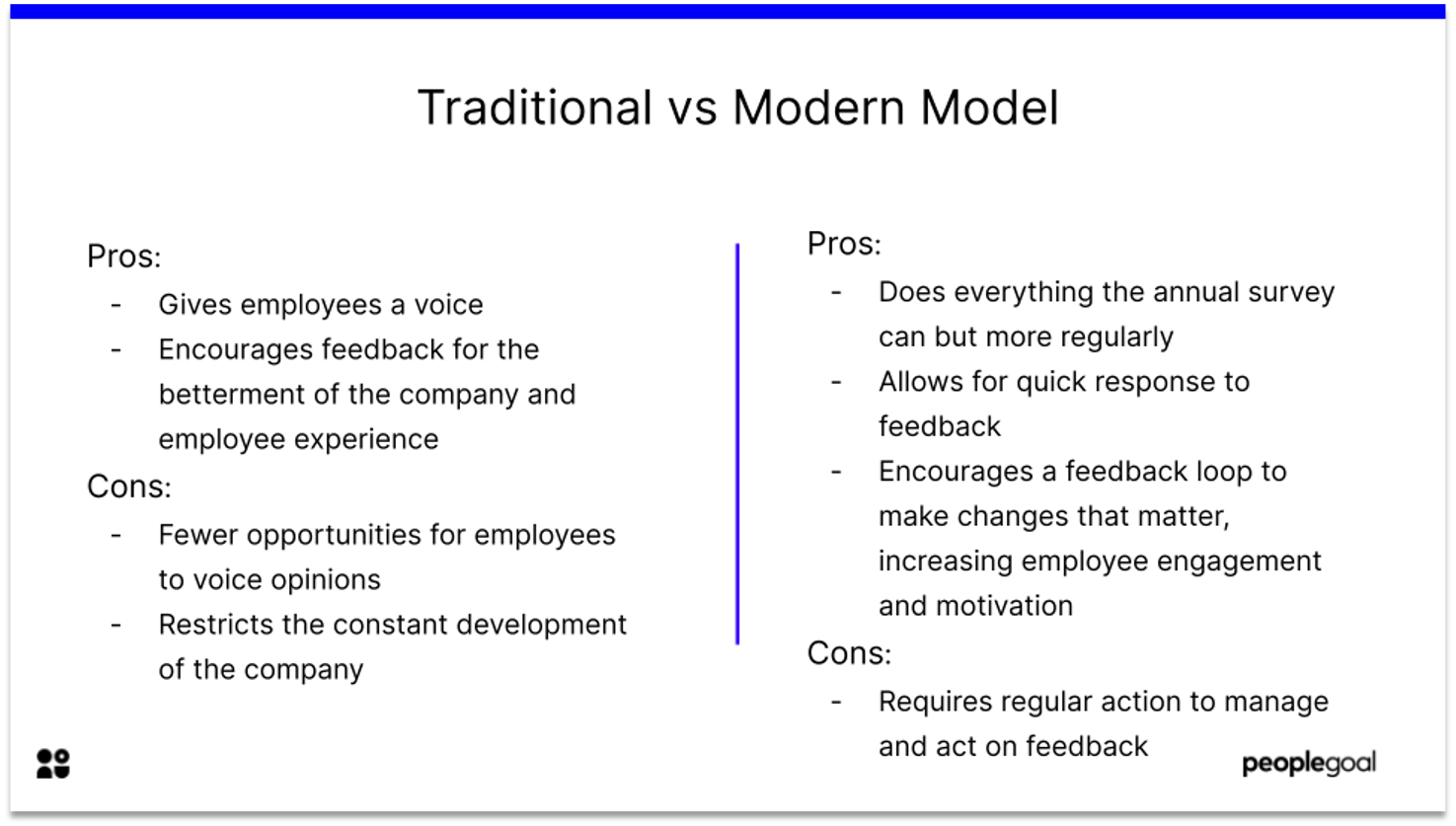
Traditional model
Annual employee engagement surveys have long been a routine and well-rehearsed method of attaining feedback regarding employee engagement. The annual survey would cover a wide range of topics, prompting employees to share their thoughts and feelings towards the company and its culture. The open-ended questions in these engagement strategies can produce some valuable information, however, it is controlled by senior managment. Whilst this model was necessary for gathering feedback from employees, its irregularity is now lackluster in a much faster-paced environment, especially with staff retention constantly fluctuating.
New model
With advancements in technology and particularly with COVID-19 forcing many employees to work remotely, there has been a push for more regular pulse surveys. These surveys might be circulated daily, weekly, or monthly and their strength is seen in their capacity to provide organizations with current figures on employee engagement and wellbeing. This is especially important with the impact of remote working and the newfound lack of spontaneous office interactions.
Through the use of more regular surveys, responses to any feedback can be enacted quickly and so the feedback loop circulates, informing an organization if amendments are well received or not. It becomes far easier to conduct an employee survey to determine how different focus groups might be getting along, for example in fulfilling their career goals.
Pulse surveys have been found to increase positive company culture and this goes to show something that is already well known – people like being listened to. The opportunity to more regularly share thoughts and feelings in the work environment has been effective in ensuring employee engagement.
What kind of metrics can you track in an employee engagement survey?
Going from what we now know about the types of engagement surveys, it is important to consider what kind of data is going to be collected. There are a variety of metrics that will provide different levels of understanding for the responses. When conducting surveys it is important to consider what feedback you want to attain. By establishing a baseline for the metrics you wish to implement in your engagement surveys, this will enable you to more easily track employee engagement.
There are various layers to measuring employee engagement and so here we will look at three strong indicators for engaged employees using: Likert scale questions, eNPS and the Happiness Index.
Likert Scale Questions
If you’ve ever answered a question that asked how much you agree or disagree with something, then you’ve answered a Likert scale question.
Essentially they are an indicator of a satisfaction score. This is important to determine employee satisfaction as the more satisfied an individual is, the more likely they are to engage with their work.
Likert scale questions prompt employees to indicate how they feel towards particular topics in a compact granular scale. This means that they will be able to respond with ratings valued from 1-5, by giving responses as demonstrated in the example below.
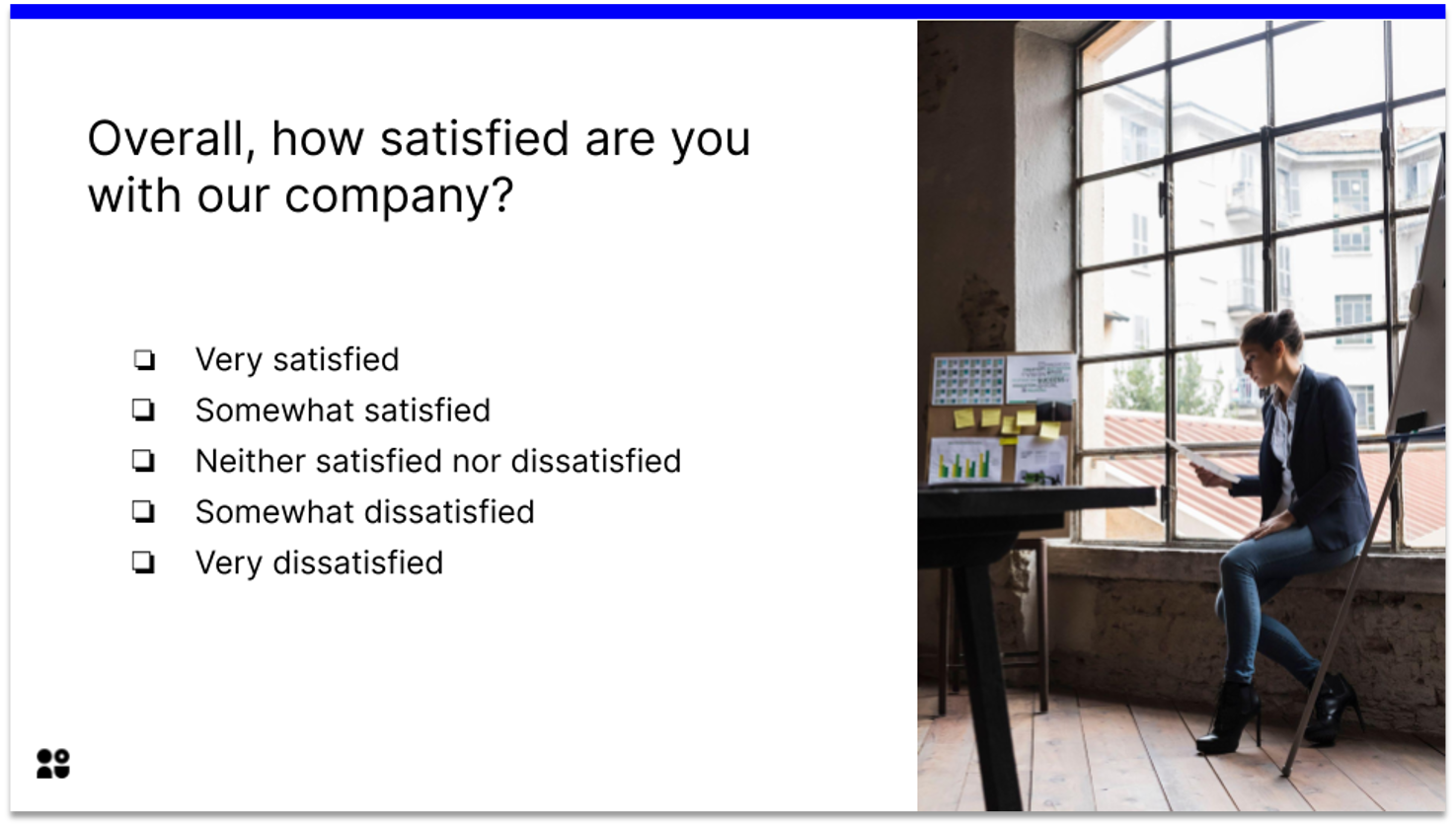
Likert scale questions are great for looking at a specific topic in greater detail. They help to find out people’s thoughts about specific aspects of a wider topic and can be framed in a variety of ways to measure sentiment about particular areas of uncertainty.
eNPS (Employee Net Promoter Score)
As we know loyal (and therefore engaged) employees work harder and will also stay with an organization for longer – eNPS is an excellent indicator of employee loyalty.
The eNPS score indicates how many employees are engaged by their work by asking them to rate the company on a scale of 1-10.
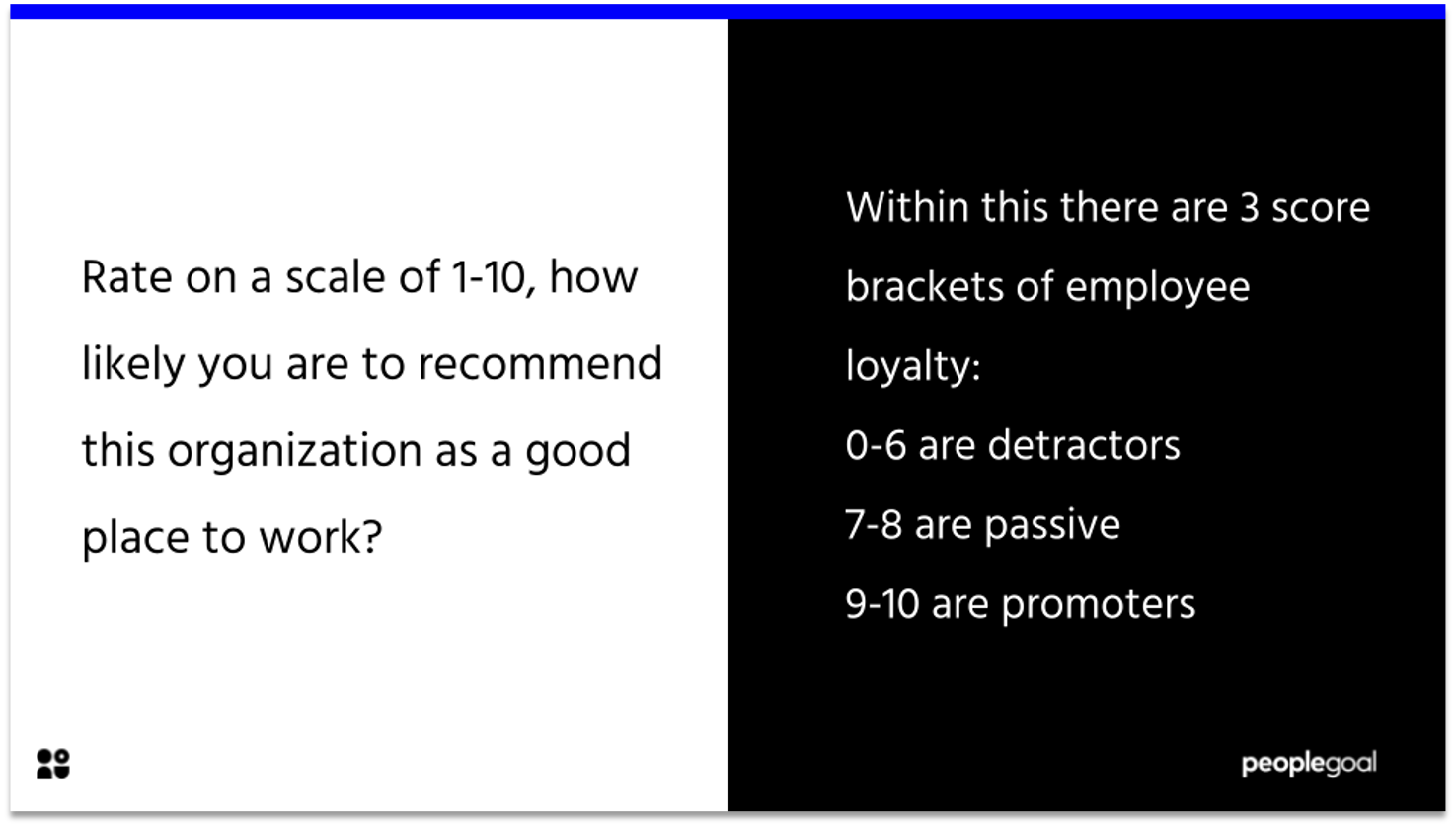
An overall score is then given by working out the percentage of the number of promoters against the number of detractors. The closer the score is to 100 the more likely workers are going to promote their company. Understanding how your employees feel and if they strongly agree with your company culture or not is a great indicator for levels of engagement.
The strength of configuring your eNPS is that it categorizes employees into three key stages of loyalty. By following up on these results and using the understanding of each employee, it enables an organization to establish what key factors are motivating or disengaging its employees. As a metric, it reveals how employees perceive a company and so is telling of how much more effort must be put into improving engagement.
Happiness Index
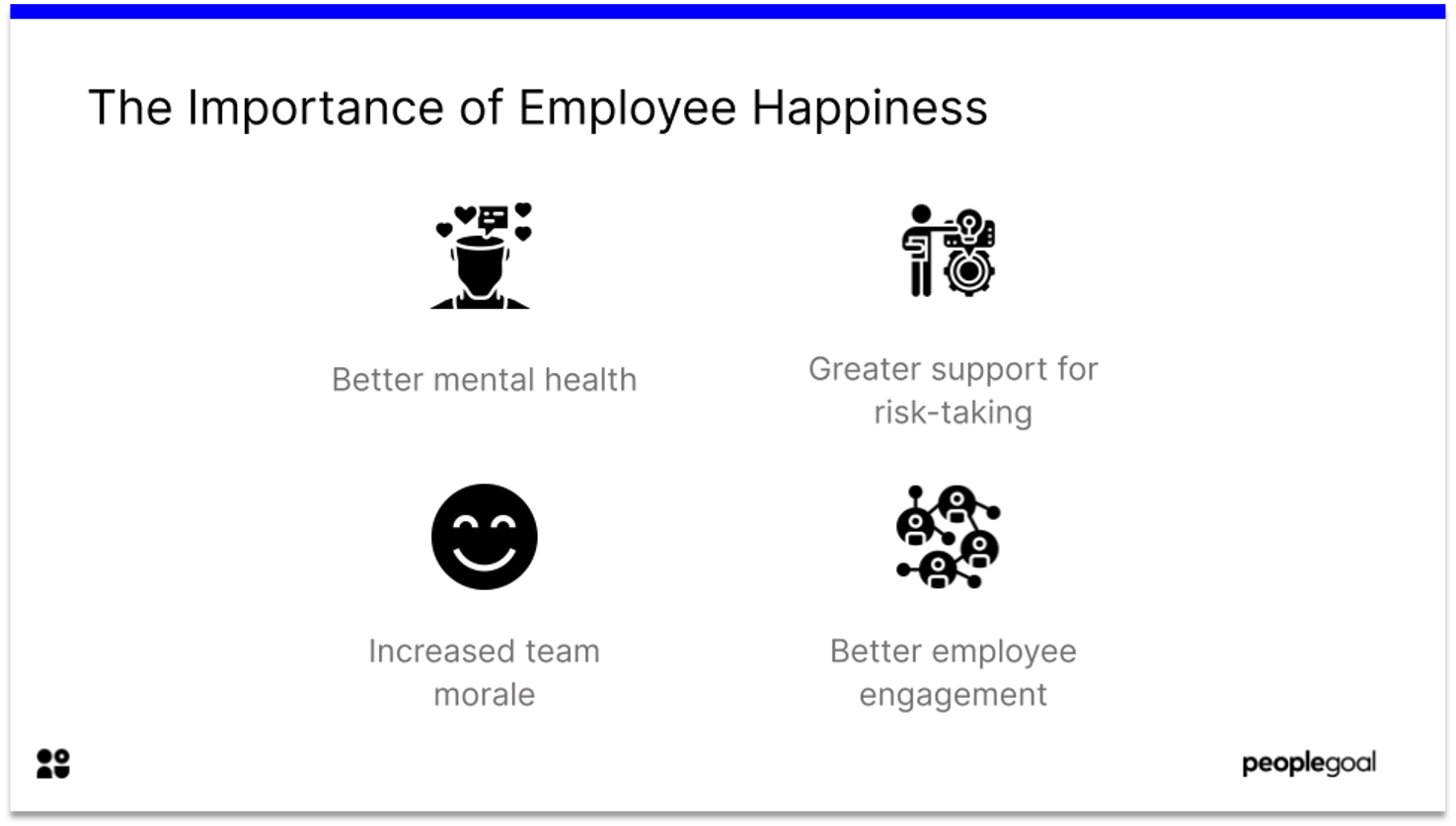
Engaged employees are motivated and enthusiastic about the work they do – in other words, they are happy workers. Whilst measuring happiness is not straightforward since it is completely subjective to each individual. Various factors can influence how happy someone is. Rather than trying to establish the various complex factors that might influence this, Forbes advocate a simple index that allows them to monitor employee happiness.
Employees are prompted to indicate their mood using a traffic light system along with an option to add any comments. This approach to measuring employee engagement is efficient and also encourages employees to be more self-aware.
All results are sent daily to a master folder and are then compared against previous averages. Each week the results are discussed openly and actions are made dependent on the conclusions. The priority is finding better ways to act on whatever is causing someone to feel stressed or unhappy and therefore disengaged.
Feeling ready to engage?
Having established the significance of employee engagement surveys for a more productive workforce and improving the livelihoods of employees. Let’s take a final look back over what has been covered:
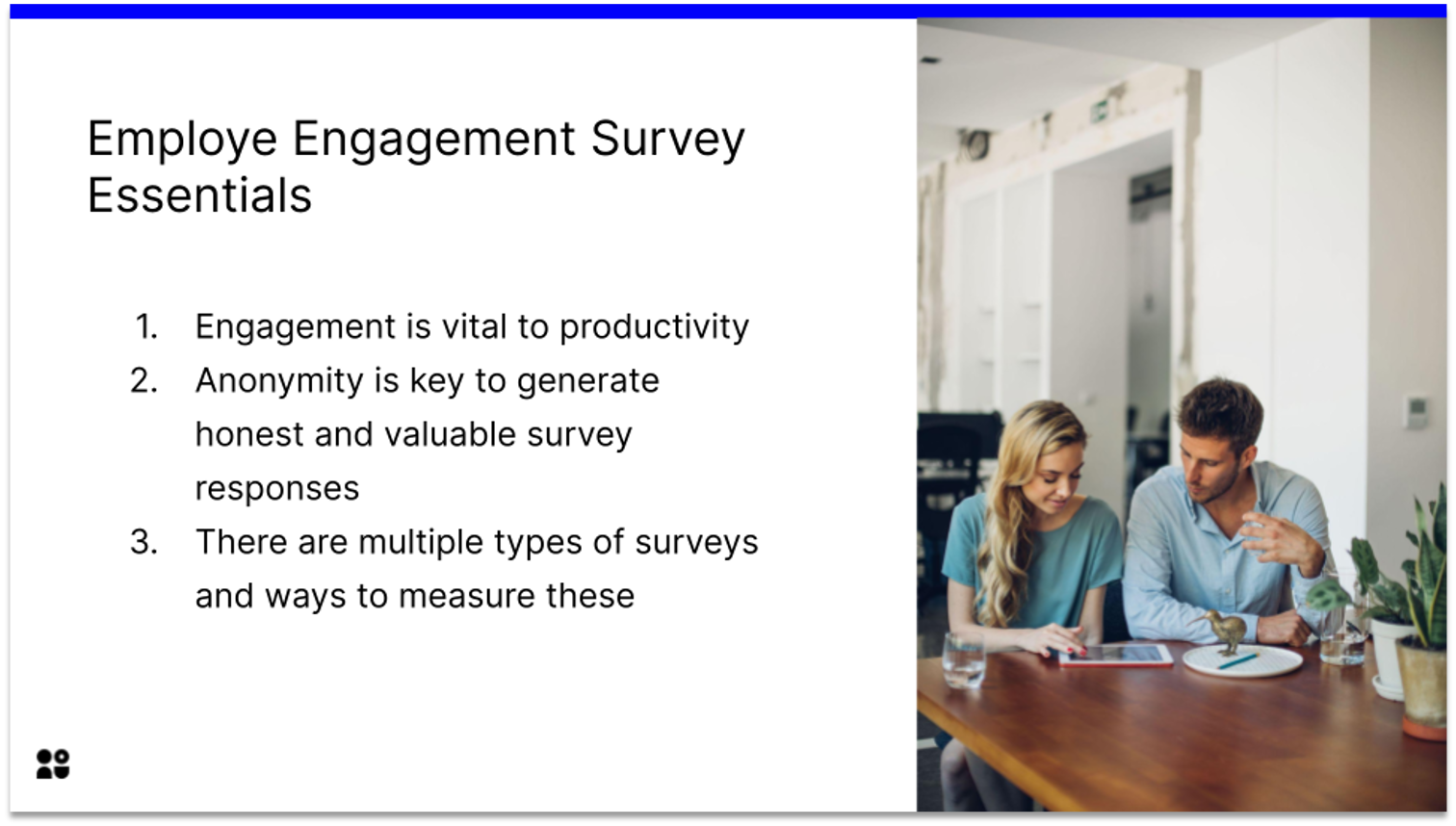
- Employee engagement is vital to productivity: unmotivated and disengaged employees are less likely to carry out an organization’s interests.
- Anonymity is key to generate honest and valuable survey responses: Giving employees the freedom to voice any concerns is more constructive for resolving issues and instills better employee engagement.
- There are multiple types of surveys and metrics: Choosing which questions to ask and how answers are collected will determine the usefulness of the responses. As such, there must be a thorough consideration for the manner with which employees are surveyed. Look to generate the most informative results and the best way to measure them with the most suitable survey questions.
Ready to 3x Your Teams' Performance?
Use the best performance management software to align goals, track progress, and boost employee engagement.

